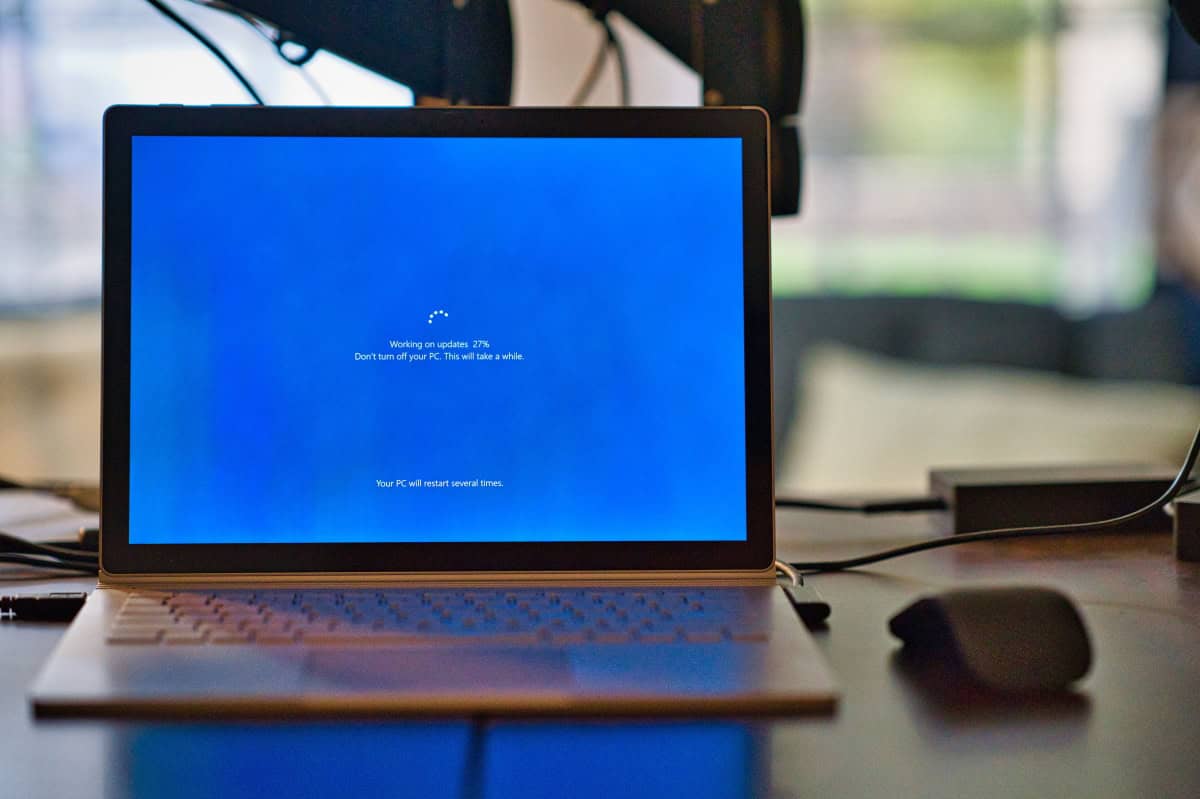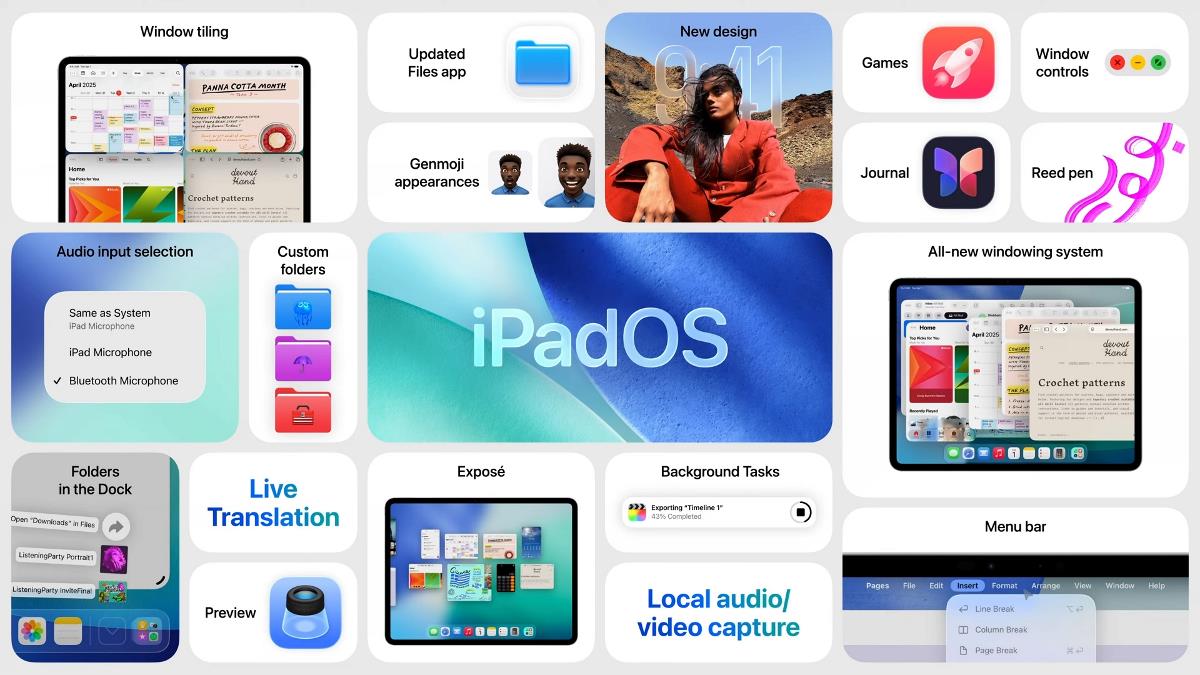Pirate Site Visits Dip to 216 Billion a Year, But Manga Piracy is Booming
Fresh data for 2024 reveals that while overall pirate site traffic dipped to 216 billion visits, the landscape is shifting dramatically. Publishing piracy is booming, largely driven by an insatiable global demand for manga. In stark contrast, both music and film piracy have tanked. Despite these changes, the United States remains the top traffic source for pirate sites. From: TF, for the latest news on copyright battles, piracy and more.

 Despite the widespread availability of legal options, online piracy remains rampant. Every day, pirate sites are visited hundreds of millions of times.
Despite the widespread availability of legal options, online piracy remains rampant. Every day, pirate sites are visited hundreds of millions of times.
Website visits are only part of the full piracy picture, as IPTV streaming is popular too. Nonetheless, traffic trends can provide valuable insight, especially when there are clear divergences across content categories.
216 Billion & America First
Fresh data released by piracy tracking outfit MUSO shows that pirate sites remain popular. In a report released today, MUSO reveals that there were 216 billion pirate site visits globally in 2024, a slight decrease compared to the 229 billion visits recorded a year earlier.
TV piracy remains by far the most popular category, representing over 44.6% of all website visits. This is followed by the publishing category with 30.7%, with film, software and music all at a respectable distance.
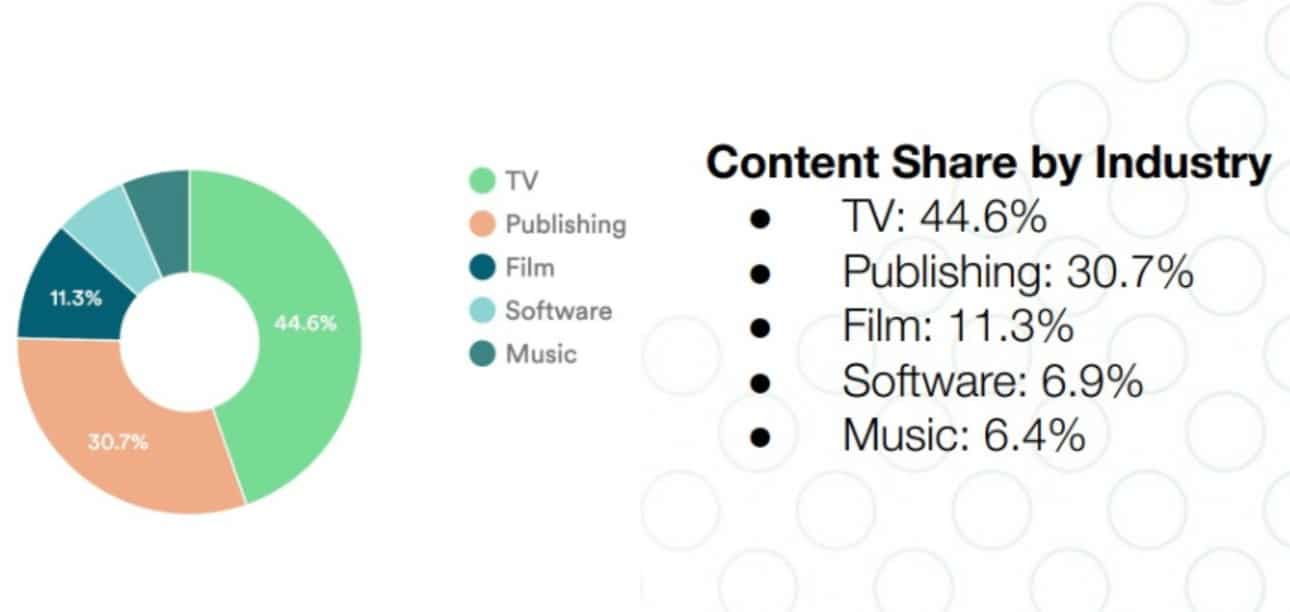
Pirate site visitors originate from all over the world, but one country stands tall above all the rest: America. The United States remains the top driver of pirate site traffic accounting for more than 12% of all traffic globally, good for 26.7 billion visits in 2024.
India has been steadily climbing the ranks for years and currently sits in second place with 17.6 billion annual visits, with Russia, Indonesia, and Vietnam completing the top five.
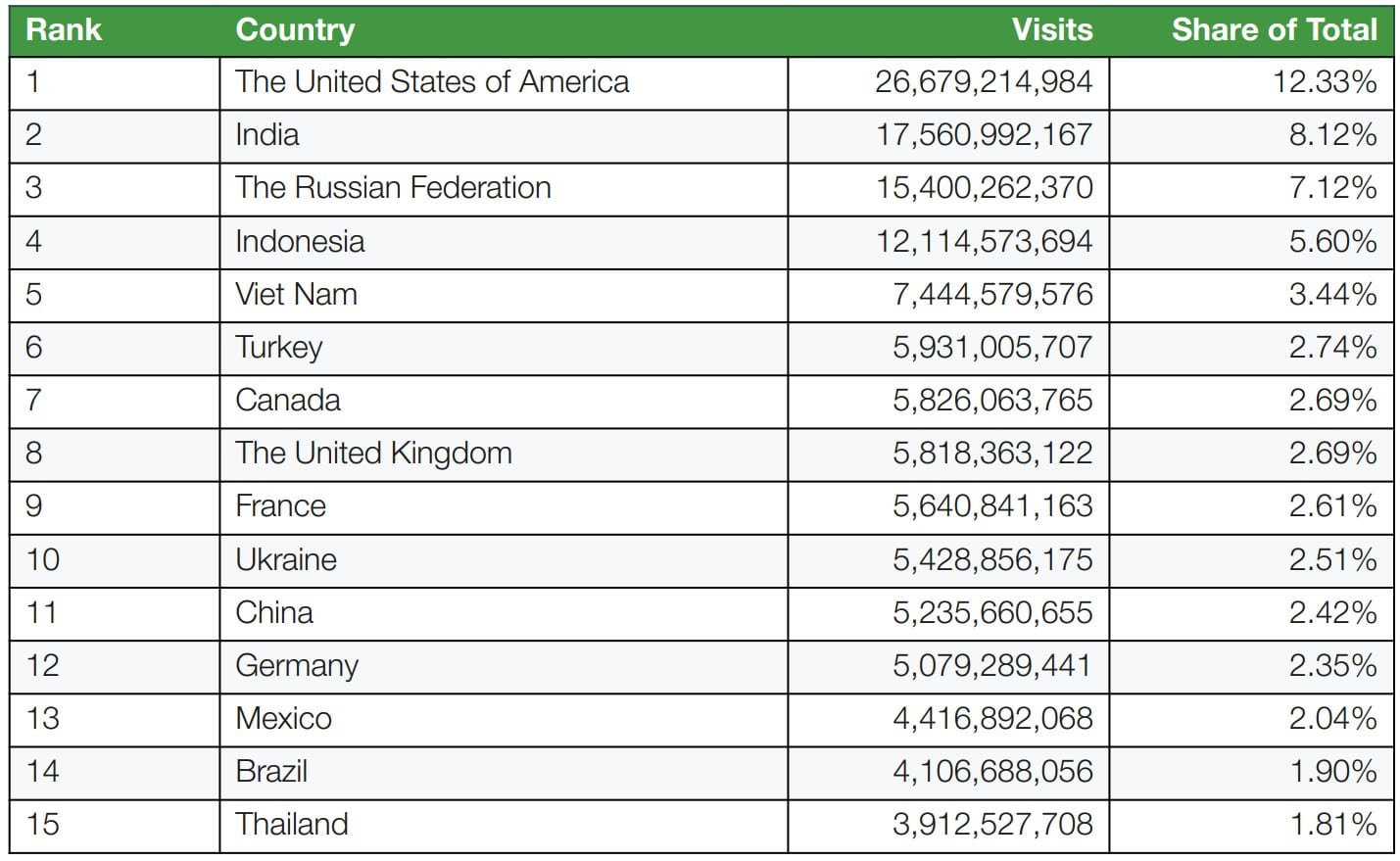
As a country with one of the largest populations worldwide, it’s not a complete surprise that the U.S. tops the list. If we counted visits per internet user, Canada and Ukraine would top the list.
Manga Piracy Booms
While pirate site visits dipped by more than 5% in 2024, one category saw substantial growth. Visits to publishing-related pirate sites increased 4.3% from 63.6 to 66.4 billion.
 The increase is largely driven by the popularity of manga, which accounts for more than 70% of all publishing piracy. Traditional book piracy, meanwhile, is stuck at 5%.
The increase is largely driven by the popularity of manga, which accounts for more than 70% of all publishing piracy. Traditional book piracy, meanwhile, is stuck at 5%.
The publishing piracy boom is relatively new. Over the past five years, the category grew by more than 100% while the overall number of global pirate site visits remained relatively flat.
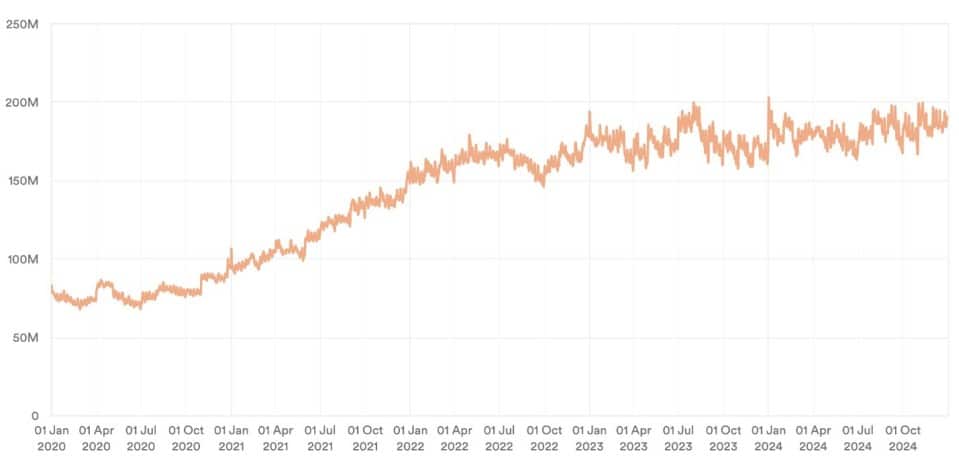
Looking at the global demand, we see that the U.S. also leads the charge here, followed by Indonesia and Russia. Notably, Japan, the home of manga, ranks fifth in the publishing category. This stands out because Japan is not listed in the global top 15 in terms of total pirate site visits.
Music & Film Piracy Tank
In the other content categories, MUSO’s data shows a dip in pirate site visits. The changes are relatively modest for TV (-6.8%) and software (-2.1%) but the same isn’t true for the music and film categories.
In 2024, there were 18% fewer visits for pirated movies compared to a year earlier. MUSO notes that this is due to a “lighter blockbuster calendar” which reduced piracy peaks. “The drop in demand is as much about what wasn’t released as it is about access,” the report explains.
The music category saw a 19% decline in piracy visits year over year, with a more uplifting explanation for rightsholders. According to MUSO, the drop can be partly attributed to “secure app ecosystems” and the “wide adoption of licensed platforms like Spotify and Apple Music.”
Piracy Leads The Way
MUSO’s business model is to market these piracy data to rightsholders so they can use piracy as a market signal. Piracy is not necessarily triggered by unavailability; legal channels, pricing, and fragmentation are also key drivers.
“Piracy continues to reveal unmet demand: where audiences want content, but legal channels are too slow, too fragmented, or too expensive,” the company explains in a blog post.
There’s also a more practical application for the piracy data. Since MUSO tracks which pirate sites are most popular, rightsholders can use the data for their site blocking efforts.
“With monthly updated insights at the country and category level, alongside access to site-level intelligence, our data empowers rightsholders, regulators, and ISPs to prioritize action where it has the most impact,” MUSO writes.
Whether blocking access will stop people from trying to find piracy alternatives is up for debate. Perhaps pirate site blocking plans in the U.S. will provide more insight, if they come to fruition.
—-
A copy of MUSO’s 2024 Piracy Trends and Insights report can be requested through the official website.
From: TF, for the latest news on copyright battles, piracy and more.





































































































































![Top Features of Vision-Based Workplace Safety Tools [2025]](https://static.wixstatic.com/media/379e66_7e75a4bcefe14e4fbc100abdff83bed3~mv2.jpg/v1/fit/w_1000,h_884,al_c,q_80/file.png?#)


































![[The AI Show Episode 152]: ChatGPT Connectors, AI-Human Relationships, New AI Job Data, OpenAI Court-Ordered to Keep ChatGPT Logs & WPP’s Large Marketing Model](https://www.marketingaiinstitute.com/hubfs/ep%20152%20cover.png)













































































































































































































































.png?width=1920&height=1920&fit=bounds&quality=70&format=jpg&auto=webp#)





















_incamerastock_Alamy.jpg?width=1280&auto=webp&quality=80&disable=upscale#)



























































































![This is Android 16’s desktop mode – a little broken, but the start of something good [Gallery]](https://i0.wp.com/9to5google.com/wp-content/uploads/sites/4/2025/06/android-16-qpr1-desktop-mode-3.jpg?resize=1200%2C628&quality=82&strip=all&ssl=1)













![WWDC 2025 Interview: Federighi and Joswiak on Siri Delay, Apple Intelligence, and iPadOS 26 [Video]](https://www.iclarified.com/images/news/97579/97579/97579-640.jpg)

![New Things On the Way From Apple [Video]](https://www.iclarified.com/images/news/97562/97562/97562-640.jpg)
![Introducing Liquid Glass [Video]](https://www.iclarified.com/images/news/97565/97565/97565-640.jpg)





















